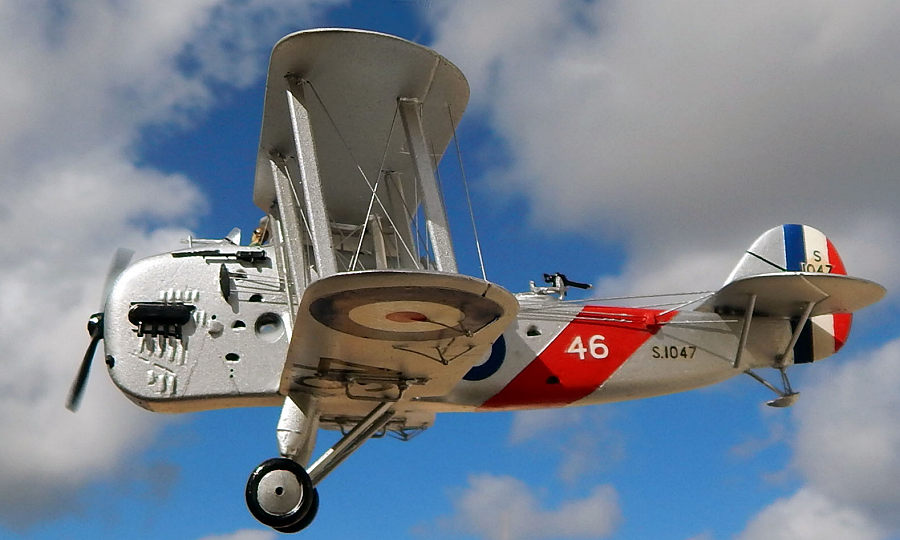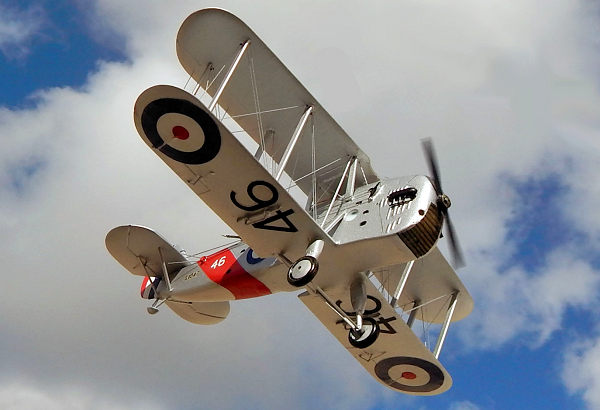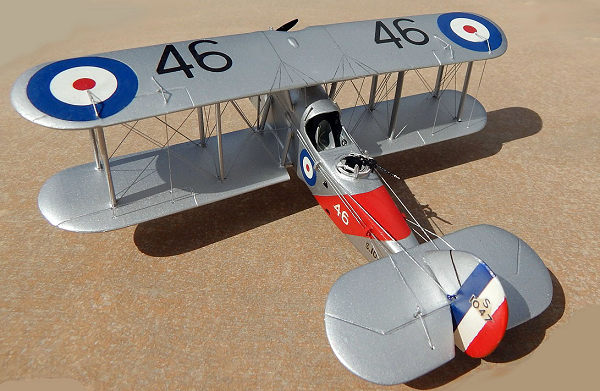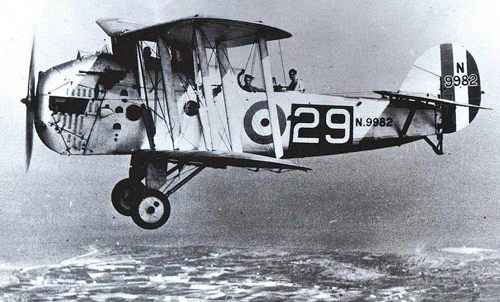
| THE KIT |
| KIT #: | |
| PRICE: | |
| DECALS: | One option |
| REVIEWER: | Carmel J. Attard |
| NOTES: | Vacuform with metal parts. |

| THE KIT |
 Moulded on white styrene with components being vac
formed and these consist of two fuselage halves, six parts for the top and
bottom wings, two tail plane parts, two fin and rudder parts. There are two
sizes of contrail type of struts to be cut to short lengths for main planes and
tail plane support. The wheels are also vac formed in four parts. Undercarriage
legs, engine side exhausts and twin blade propeller are injection moulded. Metal
items are the Lewis side gun and scarf ring complete with gun.
Moulded on white styrene with components being vac
formed and these consist of two fuselage halves, six parts for the top and
bottom wings, two tail plane parts, two fin and rudder parts. There are two
sizes of contrail type of struts to be cut to short lengths for main planes and
tail plane support. The wheels are also vac formed in four parts. Undercarriage
legs, engine side exhausts and twin blade propeller are injection moulded. Metal
items are the Lewis side gun and scarf ring complete with gun.
A folded instructions sheet contains 1/72 scale plans and short history one side and building instructions with scrap views of various bulk heads and jigs for use when fitting the wing struts at the correct inclined angle.
| CONSTRUCTION |
 All parts are separated from the moulded sheet and
each component are sanded on wet and dry sanding sheet making constant reference
to instructions not to remove too much of the material during sanding. Items
like tail plane and elevators, fin/rudder need extra sanding on the inner faces
to attain the requisite slim section and sharp trailing edges. As for the
injected parts in black plastic, these have all the surplus flash removed with a
sharp knife. They are removed from the runner using an exacto saw. These need
the edges to be rounded off to complete the contour.
All parts are separated from the moulded sheet and
each component are sanded on wet and dry sanding sheet making constant reference
to instructions not to remove too much of the material during sanding. Items
like tail plane and elevators, fin/rudder need extra sanding on the inner faces
to attain the requisite slim section and sharp trailing edges. As for the
injected parts in black plastic, these have all the surplus flash removed with a
sharp knife. They are removed from the runner using an exacto saw. These need
the edges to be rounded off to complete the contour.
In both fuselage halves are cut out the cockpit opening. Circular windows are opened in each fuselage half. From cut off material is made the cockpit floor and cemented in place adding control column ahead of crew seat. Crew seats are cemented on scrap plastic plinths to attain the height. Interior was then painted.
From scrap material half a dozen strips aprox ½“long
and 1/8” wide and were cemented at strategically spaced intervals around the
inside edge of starboard fuselage.A small part is left projecting to act as keys
when joining the two halves together and when correct alignment is achieved the
joint is flooded with liquid cement. Tape held the parts together until
thoroughly dry. Filler was then added and joint was smoothened off. Wing parts
ar e also cleaned and cemented together. Assembling the wings, and wind screen,
tail plane etc goew in same manner as in previous builds. One needs to be
careful to position the wing assembly jigs on the lower wing, 1/8” out from the
inboard struts and the upper wing is placed on the jigs before the glue is
applied. Struts are allowed to dry overnight and binding tape could then be
removed. Jury struts are then fitted to either side of fuselage forward position
only. These are of much smaller cross section than than the main interplane
struts. Cementing the tail plane struts with tail plane bracing. With the
assembly dry strong enough, then holes are drilled at all positions where
bracing wires have to pass. Thin fishing line was used for bracing wires and
secured with a tiny drop of super glue adhesive.
e also cleaned and cemented together. Assembling the wings, and wind screen,
tail plane etc goew in same manner as in previous builds. One needs to be
careful to position the wing assembly jigs on the lower wing, 1/8” out from the
inboard struts and the upper wing is placed on the jigs before the glue is
applied. Struts are allowed to dry overnight and binding tape could then be
removed. Jury struts are then fitted to either side of fuselage forward position
only. These are of much smaller cross section than than the main interplane
struts. Cementing the tail plane struts with tail plane bracing. With the
assembly dry strong enough, then holes are drilled at all positions where
bracing wires have to pass. Thin fishing line was used for bracing wires and
secured with a tiny drop of super glue adhesive.
Injection moulded parts for the undercarriage are glued in place and when these were dry wheels were cemented in place. Control horns and linkages were made from tiny pieces of plastic card cut to shape.
Aircraft was silver doped overall with a red fuselage band with white numerals. In spite of time on them decals behaved well during transferring them in their respective places.
| CONCLUSIONS |
 The Blackburn entered service in 1926 with No 420
fleet spotter flight at Gosport and later on HMS Furious. In 1929 Flights were
renumbered 450 and 449 fleet spotter recc flights. HMS Coragious brought the
type to Malta and for a time the Blackburn operated from Hal Far airfield,
Malta, until these were eventually replaced by Fairey IIIF in 1931. Not an easy
kit to build for the novice modeler but certainly not out of reach to those keen
on FAA early types with experience with vac form kits.
The Blackburn entered service in 1926 with No 420
fleet spotter flight at Gosport and later on HMS Furious. In 1929 Flights were
renumbered 450 and 449 fleet spotter recc flights. HMS Coragious brought the
type to Malta and for a time the Blackburn operated from Hal Far airfield,
Malta, until these were eventually replaced by Fairey IIIF in 1931. Not an easy
kit to build for the novice modeler but certainly not out of reach to those keen
on FAA early types with experience with vac form kits.
11 November 2019 Copyright
ModelingMadness.com If you would like your product reviewed fairly and fairly quickly, please
contact
the editor or see other details in the
Note to
Contributors.
Back to the Main Page
Back to the Review
Index Page
Back to the Previews Index Page